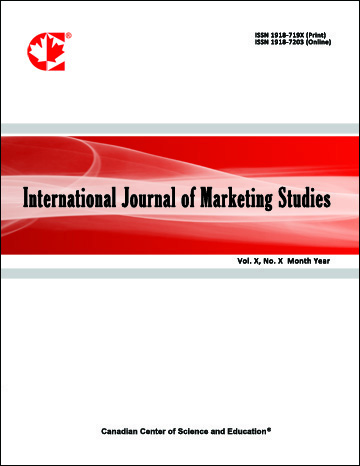Applying Logistic Regression to E-Banking Usage in Kumasi Metropolis, Ghana
- Kawme Annin
- Maurice Omane-Adjepong
- Sonita Sarpong Senya
Abstract
Purpose: The main focus of this paper is to ascertain whether customer’s decision to use e-banking is influenced by socioeconomic classifications. It further seeks to identify the kinds of e-banking services provided to customers, and also examines the most frequently patronized e-banking service.
Methodology/approach: In all, 241customers of three state-owned retail banks from Kumasi Metropolis, one of the most urbanized metropolis in Ghana, were used as sample for the survey. A well-structured questionnaire was used to obtain relevant information from the customers. Responses gathered from the customers were mainly analyzed using a binary logistic regression.
Findings: Internet banking, ATM, E-Zwich and mobile phone banking were the commonly identified e-banking services offered by the banks. Among such services, ATM was the most frequently patronized service whereas internet banking recorded very low patronage. From the chi-squared test of association, customer’s operational bank and occupational status were found to have significantly informed the decision to use e-banking. With respect to the logit analysis, customer’s operational bank, occupational status and monthly income were significant socioeconomic classification variables that informed customer’s decision to use e-banking.
Practical implications: This paper may serve as scientific basis for banks to consider customers’ socioeconomic classifications, in designing any e-banking marketing strategies in targeting customers in urban communities in Ghana.
Originality/value: With the use of a logit regression, this paper has identified occupational status, customer’s bank and monthly income as significant socioeconomic variables that inform a Ghanaian customer’s decision to use e-banking.
- Full Text:
 PDF
PDF
- DOI:10.5539/ijms.v6n2p153
Journal Metrics
Google-based Impact Factor (2021): 1.34
h-index (July 2022): 70
i10-index (July 2022): 373
Index
- Academic Journals Database
- CNKI Scholar
- EconBiz
- Electronic Journals Library
- Excellence in Research for Australia (ERA)
- GETIT@YALE (Yale University Library)
- Harvard Library
- IBZ Online
- Infotrieve
- JournalTOCs
- LOCKSS
- MIAR
- PKP Open Archives Harvester
- RePEc
- ResearchGate
- ROAD
- Scilit
- SHERPA/RoMEO
- Stanford Libraries
- UCR Library
Contact
- Alyssa SunEditorial Assistant
- ijms@ccsenet.org
